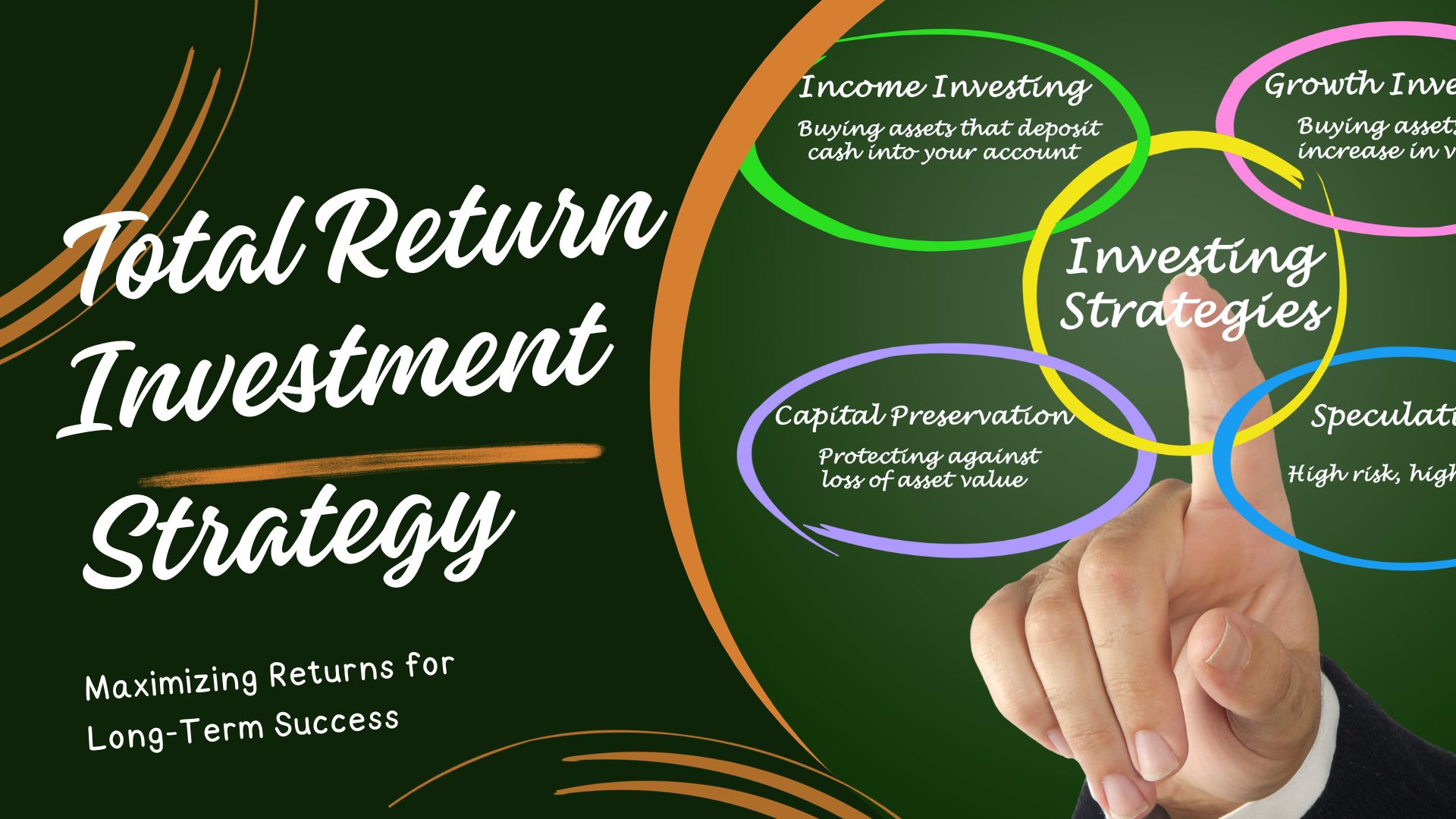The Total Return Investment Strategy is a long-term investment approach focused on maximizing the overall return of a portfolio, including capital appreciation and income generated from investments. It aims to provide both growth and income to investors.
What Is Total Return Investing?
Total return investing is a long-term investment strategy that aims to maximize the overall return of a portfolio. This strategy considers both capital appreciation and income generated from investments. Instead of focusing solely on generating income or capital gains, total return investing takes a comprehensive approach, combining the two to achieve higher returns.
Definition of Total Return Investing
Total return investing refers to a strategy that seeks to maximize the return on investment by considering both capital appreciation and income generated from investments. By taking a comprehensive approach, this strategy aims to achieve higher returns in the long term.
Components of Total Return Investing
Total return investing consists of two main components: capital appreciation and income. Capital appreciation refers to the increase in the value of an investment over time, while income refers to the earnings generated from the investment, such as dividends or interest payments.
Benefits of Total Return Investing
Total return investing offers several benefits. Firstly, it provides a more holistic approach to investing, considering both capital gains and income. This can lead to higher overall returns. Secondly, it allows for flexibility in portfolio management, as investors can focus on a combination of asset classes and investment opportunities. Lastly, total return investing can help mitigate risk by diversifying the sources of returns.
The Five Percent Rule
The Five Percent Rule
The Five Percent Rule is an investment strategy that aims to maximize the overall return of a portfolio. It focuses on both capital appreciation and income generated from investments. The rule suggests that an investor can withdraw up to 5% of their portfolio’s value each year without depleting the principal.
The rule works by balancing the withdrawal amount with the portfolio’s growth so that it can sustain withdrawals over the long term. It takes into account the investment’s return and adjusts the withdrawal percentage accordingly to ensure the portfolio’s sustainability.
For example, if an investor’s portfolio has a value of $500,000, they can withdraw $25,000 (5% of $500,000) annually. If the portfolio’s value grows to $600,000, the withdrawal amount would increase to $30,000 (5% of $600,000).
By following the Five Percent Rule, investors can maintain a sustainable income while preserving their portfolio’s capital for the long term.
Investment Strategies With High Returns
Investment Strategies with High Returns
Total return investing is a long-term investment strategy focused on maximizing the overall return of a portfolio, which includes both capital appreciation and income generated from investments. One notable investment strategy with high returns is the “equity stocks buy and hold” approach. This strategy involves accumulating stocks of companies that match your investment profile and holding them for the long term. Additionally, the calculation method categorizes returns on investments into net income, capital gain, total return, and annualized return. The goal of total return investing is to generate continual growth and income over time.
Equity Stocks Buy and Hold: Long-term strategy with proven high returns.
Income Investing: Focuses on income generation from investments.
Dividend Investing: Emphasizes investing in companies that pay dividends.
Real Estate Investment Trusts (REITs): Invests in income-generating real estate properties.
| Investment Strategy | Returns | Risk Level |
|---|---|---|
| Equity Stocks Buy and Hold | High | Medium |
| Income Investing | Medium | Low |
| Dividend Investing | High | Medium |
| REITs | Medium | High |
Frequently Asked Questions For Total Return Investment Strategy
What Is The 5% Rule In Investing?
The 5% rule in investing refers to a strategy where an investor aims to limit their exposure to any single investment to no more than 5% of their total portfolio. This helps diversify risk and prevent significant losses.
What Is An Example Of A Total Return On An Investment?
A total return on an investment is the overall return, including both capital appreciation and income generated from investments.
What Investment Strategy Has The Highest Return?
One investment strategy with the highest return is the long-term “equity stocks buy and hold” strategy. It has a proven track record of generating high returns over time. It involves accumulating stocks that align with your investment profile and holding them for the long term.
What Are The 4 Types Of Return On Investment?
The four types of return on investment are net income, capital gain, total return, and annualized return.
Conclusion
To maximize the overall return of your investment portfolio, a total return investment strategy takes into account both capital appreciation and income generated from investments. It focuses on long-term investment goals and aims to mitigate risk by diversifying holdings. By adopting this approach, you can potentially achieve higher returns compared to other investment strategies.
One proven strategy is the “equity stocks buy and hold” approach, which has historically generated one of the highest returns. Accumulating stocks of companies that match your investment profile and holding them for the long term can help you build wealth over time.
Calculating total return is straightforward, as it involves considering net income, capital gains, total return, and annualized return. This method is easy to understand and interpret, providing valuable insights into the performance of your investment. A total return investment strategy provides a comprehensive approach to maximizing returns.
By focusing on capital appreciation and income generation, this long-term strategy allows you to achieve your financial goals while effectively managing risk.

Pavel Zelenka is a seasoned expert in the realms of long-term and value capital investment, as well as angel investing. With a robust background in finance and strategic investment, Pavel Zelenka has distinguished herself as a trusted advisor in the dynamic landscape of wealth creation. Her expertise in long-term investment strategies involves a meticulous approach to identifying opportunities that align with sustained growth and value creation over time. Additionally, Pavel Zelenka excels in valuing capital investments, employing a comprehensive understanding of market trends and asset valuation to guide her decision-making process.
Furthermore, as an angel investment expert, Pavel Zelenka actively engages in supporting and nurturing early-stage ventures. Her keen eye for promising startups, coupled with a strategic approach to angel investing, positions her as a valuable mentor for entrepreneurs seeking not just financial backing but also strategic guidance. Pavel Zelenka’s contributions to the fields of long-term investment, capital valuation, and angel investing underscore her commitment to fostering sustainable growth and innovation in the financial landscape.


